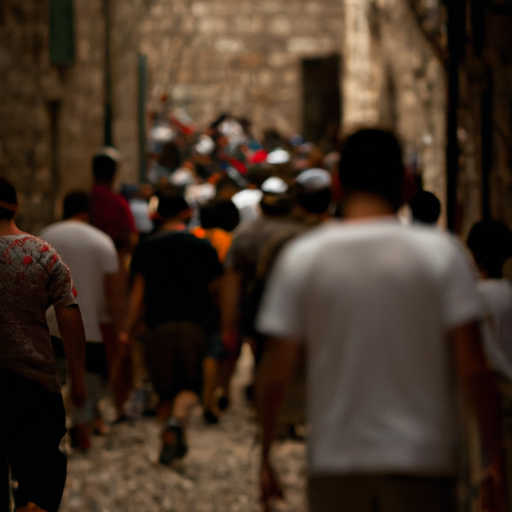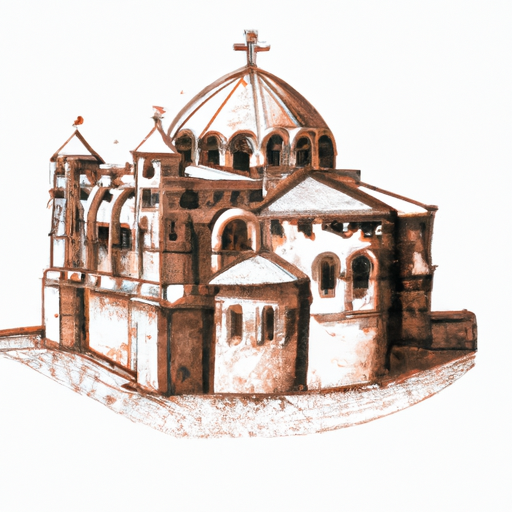Embark on a spiritual journey through the heart of Israel as we explore some of the most sacred sites in the world. The blog post provides a detailed guide on the best Holy Land tours, from the ancient cobblestones of Jerusalem's Old City to the tranquil shores of the Sea of Galilee. Discover the religious significance of these holy sites, learn about their historical and cultural context, and receive insider tips for navigating these places. We also provide recommendations for both guided tours and self-exploration.
1. Jerusalem's Old City: Stepping Into History?
Jerusalem's Old City is a place of immense historical and religious significance, attracting millions of visitors from around the world each year. Stepping into its ancient walls is like entering a time capsule that takes you back thousands of years. With its narrow winding streets and unique blend of cultures, this UNESCO World Heritage Site is a must-visit for anyone seeking to explore Israel's spiritual sites.
As you wander through the Old City, you'll encounter numerous religious landmarks, each with its own rich history. The most iconic of these is the Dome of the Rock, a magnificent Islamic shrine that sits atop the Temple Mount. Its golden dome is a symbol of Jerusalem and can be seen from various parts of the city. The Al-Aqsa Mosque, located adjacent to the Dome of the Rock, is another important site for Muslims, believed to be the place from which the Prophet Muhammad ascended to heaven.
For Christians, the Old City holds special significance as the place where Jesus walked, taught, and was crucified. The Via Dolorosa, also known as the Way of the Cross, is a route that commemorates Jesus' final journey. It starts at the Lion's Gate and ends at the Church of the Holy Sepulchre, believed to be the site of Jesus' crucifixion, burial, and resurrection. Walking along this path is a powerful and emotional experience, connecting visitors to the events of Jesus' last days.

1. An image depicting the bustling narrow streets of Jerusalem's Old City, filled with pilgrims and tourists.
2. 'The Western Wall': More than Just a Wall?
The Western Wall, also known as the Wailing Wall, is one of the most significant sites in Judaism and a powerful symbol of the Jewish people's connection to their heritage. This ancient limestone wall is part of the retaining wall of the Second Temple, which was destroyed by the Romans in 70 CE. While it may appear as just a wall to some, it holds immense spiritual and emotional significance for Jews around the world.
Jews from all walks of life come to the Western Wall to pray, reflect, and place handwritten notes in the crevices of the ancient stones. These notes contain personal prayers and wishes, creating a tangible connection between the individual and the divine. The atmosphere at the Wall is charged with devotion, as people sway and recite prayers, seeking solace and guidance.
The Western Wall Plaza, where the Wall is located, is meticulously maintained and provides a serene space for contemplation. Visitors can approach the Wall and touch its rough surface, feeling the weight of history and the collective prayers of generations before them. It is customary to approach the Wall with respect, covering one's shoulders and head as a sign of reverence.
3. The Church of the Holy Sepulchre: Where Divinity Meets Humanity
The Church of the Holy Sepulchre, located in the heart of Jerusalem's Old City, is one of the most sacred sites in Christianity. It is believed to be the place where Jesus was crucified, buried, and resurrected. Stepping inside this ancient church is like entering a realm where divinity meets humanity, where centuries of faith and devotion intertwine.
As you walk through the entrance, you are immediately struck by the grandeur and complexity of the church's architecture. The dimly lit interior is adorned with ornate decorations, intricate mosaics, and flickering candles, creating an atmosphere of reverence and awe. Pilgrims and visitors from all over the world gather here to pay their respects and immerse themselves in the spirituality that permeates the space.
One of the most significant sites within the church is the Stone of Anointing, where tradition holds that Jesus' body was prepared for burial. Pilgrims often touch or kiss the stone, seeking a connection to the final moments of Jesus' earthly life. Another important area is the Aedicule, a small structure within the church that houses the tomb believed to be the burial site of Jesus. Pilgrims can enter this sacred space, offering prayers and reflecting on the profound significance of Jesus' resurrection.
Navigating the Church of the Holy Sepulcher can be overwhelming due to its sheer size and the number of chapels and sacred areas it contains. It is recommended to explore the church with a knowledgeable guide who can provide historical and religious context. Additionally, visiting during non-peak hours can help you immerse yourself in the spiritual ambiance and allow for a more introspective experience.

3. An illustration of the Church of the Holy Sepulchre, highlighting its intricate architectural details.
4. Sea of Galilee: A Place of Peace and Miracles?
The Sea of Galilee, also known as Lake Tiberias, holds immense significance in both religious and historical contexts. It is a place of peace, tranquility, and spirituality, where many believe Jesus performed miracles and taught his disciples.
- 1. Miracles on the Waters:
According to the New Testament, Jesus is said to have walked on the waters of the Sea of Galilee, calming a storm and demonstrating his divine power. This event is a powerful symbol of faith and trust in the face of adversity. Today, visitors can take boat rides on the sea, retracing Jesus' steps and reflecting on the miracles that unfolded on these very waters. - 2. Serene Surroundings:
The Sea of Galilee is nestled amidst stunning natural beauty, with rolling hills, lush green landscapes, and picturesque shorelines. The peacefulness of the surroundings adds to the spiritual atmosphere of the area, providing a perfect backdrop for contemplation and reflection. Many visitors are drawn to its shores for moments of quiet introspection and to connect with their faith on a deeper level. - 3. Sites of Spiritual Significance:
Along the shores of the Sea of Galilee, there are several sites that hold great religious importance. One such site is the Mount of Beatitudes, where Jesus is believed to have delivered the Sermon on the Mount. Visitors can explore the beautifully landscaped gardens and enjoy breathtaking views of the sea while reflecting on Jesus' teachings of love, compassion, and humility.Another notable site is Capernaum, a fishing village that was a significant center of Jesus' ministry. Here, visitors can see the ruins of an ancient synagogue and the house of St. Peter, gaining insights into the daily life and teachings of Jesus.
Whether you're a devout pilgrim or a curious traveler, touring the holy sites of Israel is an experience like no other. The mix of ancient history, spiritual significance, and cultural diversity is a unique blend that makes these places more than just tourist spots. They are sacred spaces that have witnessed centuries of faith, prayer, and pilgrimage. Whether you choose a guided tour or self-exploration, each visit to these holy sites offers a profound experience that can deepen your understanding of history, culture, and spirituality.
For more info about Israel tours please read further.




